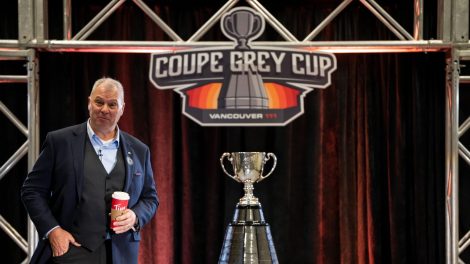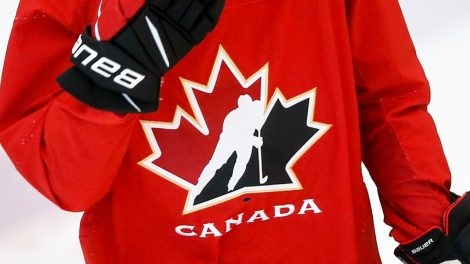COLUMBUS, OHIO – It’s like battling Roberto Luongo all over again, except this time it’s not the contract that’s going to suck. It’s the decision.
“When we make our decision, it’s going to suck for the other guys. Plain and simple. It’s not going to be fair to the other guys, but we have to eventually make a decision who’s going to start,” says John Tortorella, head coach of Team USA and, in less than a week’s time, the bearer of some hard news to two of the world’s greatest goaltenders.
There is a Lernaean Hydra lurking in the U.S. crease, and it is headed by Jonathan Quick, Ben Bishop and Cory Schneider. Pick your poison. Flip a three-sided coin. No other country in the World Cup has such an even competition for the net. Three ’86 babies. Three talented rivals of the Hockey East college system who had to battle their way to the top. All over six feet tall and 200 pounds.
“It could be any one of us. We have to make sure we’re playing well. If we have a down practice or a down game, that’s all it’s going to take—because the other two guys are going to be good,” says New Jersey’s Schneider, inspired by this week’s friendly battle. And it’s triggered memories.
“It brings me back to when I was playing behind guys like Roberto Luongo and Marty Brodeur. You get that drive to out-compete them and beat them. It brings the best out of you as a player. I’m enjoying it. We’re having fun,” he explains.
“The last few years we’ve all been The Guy. Part of being that guy is carrying that mentality and having that aura of being a Number 1. You don’t need to be pushed as much as when you were younger because you know what it takes to be that guy and stay there. It’s refreshing to be in this role again.”
Tortorella says such depth at the most important position on the ice is a nice problem to be saddled with, yet it’s one he’s been wrestling with for months.
He and goaltending coach Scott Gordon have devised a plan to reach a decision on a No. 1. Three pre-tournament games, three different starters?
“It’s not that simple,” Tortorella says. “I want to make a decision before our third exhibition game.”
We could see the goaltenders split games, getting one- or two-period-long looks during the back-to-back versus Canada this weekend. We won’t see the same starter Friday and Saturday, Tortorella assures.
“There’s certainly not enough time to make a true determination of who wins a job,” Tortorella admits. “We want to give all three a fair whack at showing us what they can do in fighting for that spot.
“It’s going to allow us to play really aggressively and take some chances. Because any one of those guys going in net, we feel if we give up something, we have a good chance of stopping the puck. “
The Americans’ high-tempo practices have featured a peppering of pucks at both ends of the ice: two-on-one rushes, two-on-ohs, breakaway drills. As the third goalie gets tagged in, you’ll see a fist bump. Their lockers are aligned along the ball wall of the Blue Jackets dressing room, and you can catch them chatting and laughing during circle time.
All three say they’ve been kept in the dark as to management’s evaluation plan or leanings. (“We haven’t heard anything, and that’s fine. There’s no pretense, no assumptions,” Schneider says.)
L.A.’s Quick has the hardware (two Cups, a Conn Smythe, a William Jennings Trophy), the best-on-best experience (he posted a .923 save percentage for the U.S. at the 2014 Olympics), and the confidence of Dean Lombardi, general manager of both USA and the Kings. Yet he’s coming off a disappointing post-season and his .918 save percentage in 2015-16 was actually worse than that of Schneider and Bishop. Quick is the most aggressive and athletic of the three.
Bishop, 6-foot-3, is the biggest. He’s a Vezina finalist twice over, and he tells us his ankle is 100 per cent healthy after getting injured in the Eastern Conference final. He plays farther back in his crease, tracks the puck well and has a knack for calmly playing dump-ins and assisting with the defensive zone breakout.
Schneider plays for a weaker team than his counterparts and has still managed a save percentage of .921 or better in every season he’s seen a minimum of 25 games. He says his positioning falls between Quick’s and Bishop’s.
“I’m a hair more aggressive from when I first got to Vancouver. Not out of my net too much. I might’ve been toes on the crease line, now I’m middle of the skate on the crease line if I need to be,” he says.
To a man, the U.S. forwards say they have full confidence in whichever goalie gets the gig. Blake Wheeler and Derek Stepan jokingly complain that they haven’t been able to score much.
“They’re all tough. They’re all so big, too. They all look the same. When you’re going in there, you’re trying to find a spot on any of them. They’re all very special. I think we’re going to be confident with whoever we have in net,” says Patrick Kane.
“Quick, he likes to challenge. He likes to play on top of his crease and has a lot of success doing that. Then you look at Bishop—he probably sits back a bit more. He’s a bigger guy. Takes up a lot of net. It’s the same scouting report on any goalie you’re going to play: try to get traffic, get him moving side to side, generate one-timers.”
Bishop’s camp philosophy is simple: Worry about yourself. Stop as many pucks as possible.
“In the exhibition game, you want to do well and make it harder on [the coaches to decide],” the Lightning star says, “but I think they have a pretty good idea where they want to go. The only thing you can do is when you get a chance to play, play well.”
Though Tortorella says flat-out he hasn’t reached a verdict, our money is on Quick reclaiming the No. 1 spot, for two reasons: the Cup rings.
Thing is, it might not matter who the U.S. anoints its starter.
“Any time you have good goaltending, you got a shot,” says Wheeler. “We have three of the best. You could pick one name out of a hat and you have an opportunity.”








